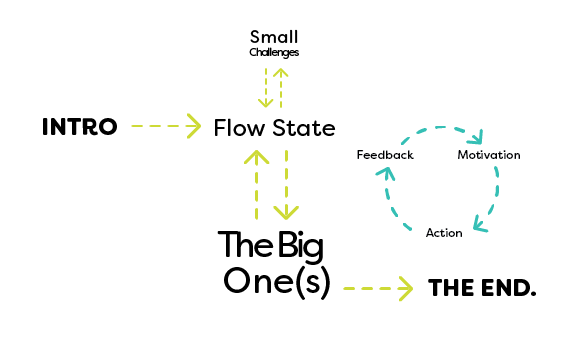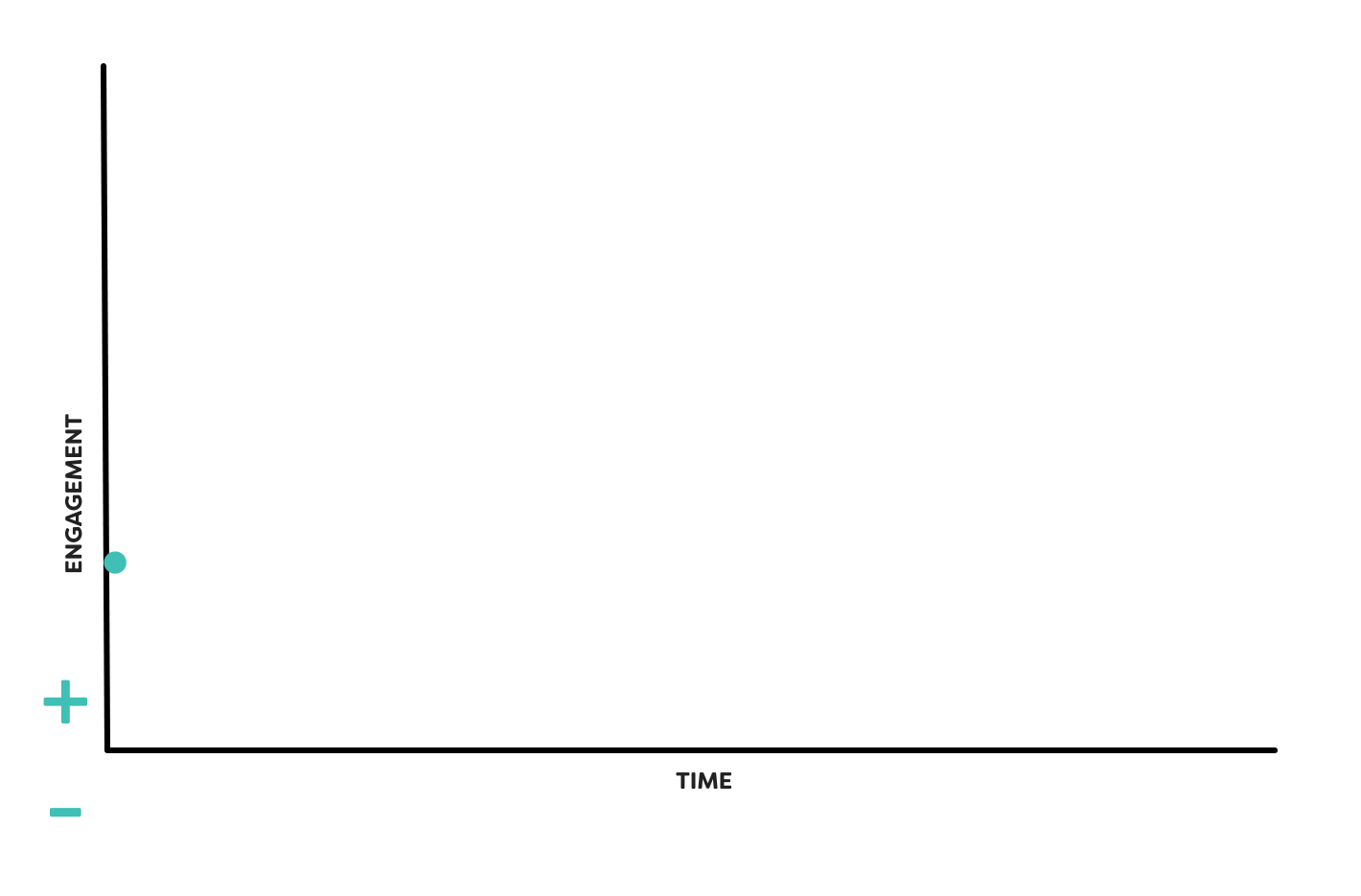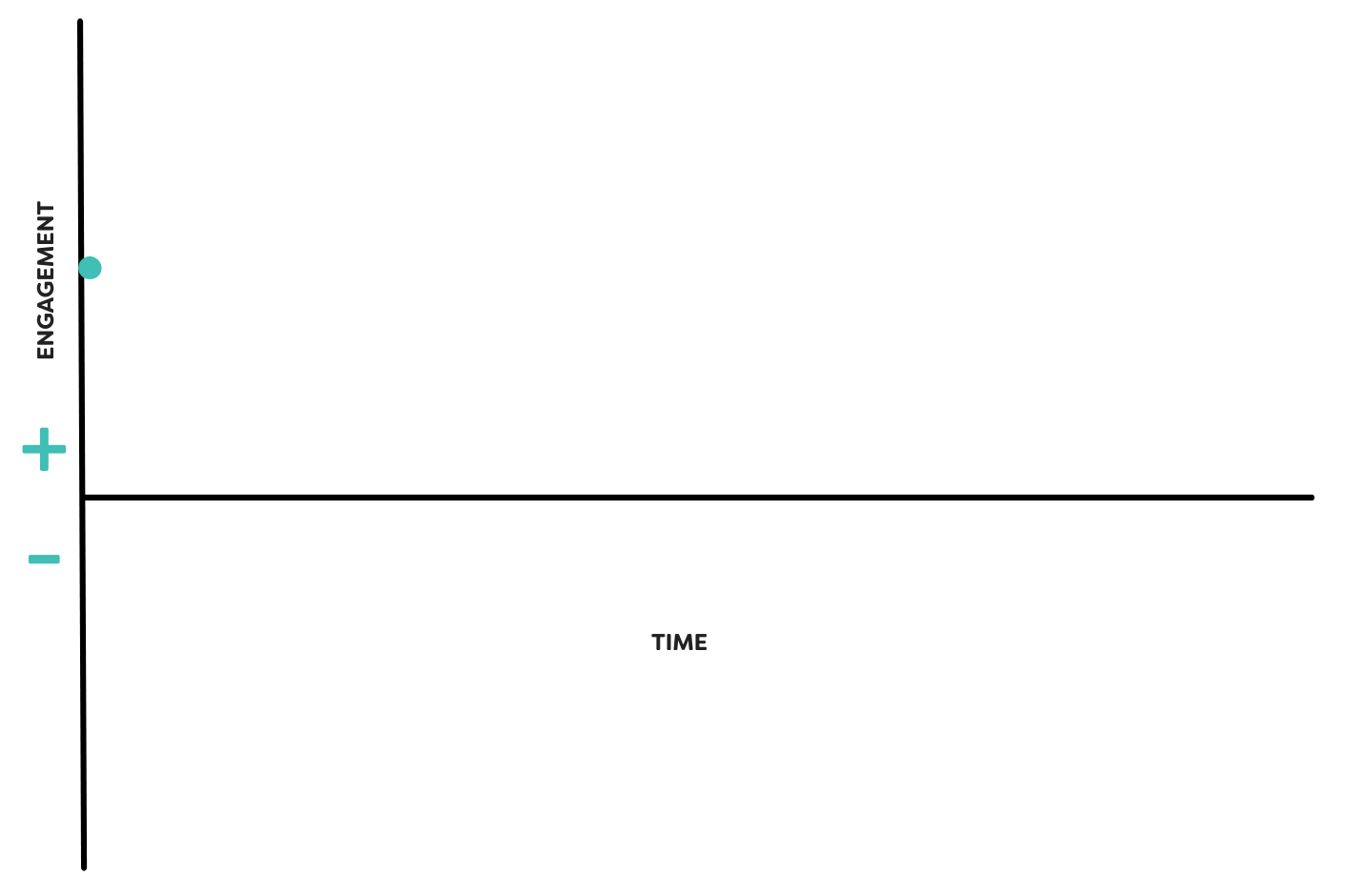The Gamification of Education - Part 1: The Engagement Loop
A videogame is an engaging machine designed to keep you wanting to come back to play more and more. With well crafted video games, game mechanics are designed to feed into each other in a satisfying and progressive loop: motivation, action, and feedback.
That sense of progression and engagement can be used in multiple contexts including services, websites and education.
This blog is the first one on a series focusing on the Gamification of Education. Starting with the concept of the engagement loop:
“An engagement loop is an experience that a user enters (and cycles through endlessly) that offers incentives and dynamic, positive reinforcement mechanisms.”
Charley Miller, Game Designer & Product Manager
When looking at how the player flows through a game, the main components of this “Engagement Loop” are:

When game introductions are done badly, they can deter a player right away from progressing forward. Similarly, a bad game ending can lead to a negative review. These two topics will be a future blog post on their own, so in the meantime, let’s focus on the other three parts of this engagement loop:
1. Flow State:
Game mechanics in this state of the loop are simple but satisfactory. Picking ingredients for a recipe, buying weapons, or finding a hiding spot; these are good examples of mechanics that belong to the Flow state. They give the player building blocks to use during the challenge phases.
If the mechanics are well crafted during the Flow state, the player can feel relaxed and be susceptible to bursts of enjoyment at new findings. On the negative side, if this phase continues too long or the mechanics are not engaging the player will experience boredom and will have a high chance of abandoning the game.
2. Small Challenges:
To achieve game progression the player is presented with different types of challenges after the flow state. Most of the challenges can be conquered with the tools already available and learned by the player. Combat and puzzles are all examples of game challenge mechanics.
If executed properly, the player experiences excitement and adrenaline rushes during these challenges. The game designer times these challenges so that they match the player’s level of experience (or gives the player the opportunity to back out and come back once the necessary skills have been acquired). If not timed properly, the player is at risk of experiencing boredom (too easy) or stress (too hard). Too much of any of those emotions and the player will stop playing the game.
After some of these small challenges the player can receive a direct reward. These rewards can come in different shapes and sizes, ranging from new levels, achievements, leaderboards updates, and profile badges. The player is then returned to the Flow State at the end of the challenge with a sense of accomplishment and engagement to the game progression.
3. The Big One(s):
Depending on the length of a game, there might be single or multiple big challenges presented to the player. There is an element of surprise to these experiences and a big payoff once they are conquered. With that in mind, the player might not have all the tools available to complete one of these challenges at the time and may require additional help. Help that can come in the form of assistance from friends, new tools, weapons, etc.
These big challenges have a higher degree of intensity and a longer duration in comparison with the smaller challenge equivalents. Given the intensity and duration, if not timed or designed properly the player could experience stress due to the difficulty and could potentially stop playing the game.
The emotional rollercoaster the player is taken through, in a well crafted game, looks like this:

If the experience is negative at any point in time, the undesirable result is that player will quit out of the game.

Well crafted education experiences follow similar concepts implicitly. Whether the learning experience happens in a classroom or online, it is our goal to ensure that the student is fully engaged and wants to continue. Similar to videogames, opting out or quitting the experience is an equally undesirable outcome.
Something to ask yourself when designing an digital course production is:
- How well are you timing these learning mechanics?
- Are the flow experiences (lectures) too long?
- Are there enough small challenges (tests, questions, workshops) for the learners to feel that they are progressing?
- Are the Big Challenges (finals) timed properly?
If you are interested in learning more about the Engagement Loop, here are some great articles on the topic:
- How Video Games Trigger Extreme User Engagement
- Entice Me Back: How Core Loops drive Re-Engagement
- Dr. Ken Wong on teaching MOOCs, blended MOOCs and the recently launched Software Design & Architecture MOOC
- Magic Pixie Wonder Dust 3000 (Enterprise Edition): Designing Motivational Experience
Here at Onlea, these are the types of questions we are always challenging ourselves with answering to create engaging educational experiences. With our team’s diverse knowledge of educational design, high quality production and gamification, we design our courses with the intent to keep students engaged by utilizing the Engagement Loop with our presenters, interactive learning objects, and course content.
To learn more about gamification and online learning in the following articles:
- The Gamification of Education Part 2 - Player Types
- How to Increase Learner Engagement in Online Courses
- Education vs. Entertainment
To learn more about how to develop engaging and accessible learning, subscribe to our newsletter.